Class 10 CBSE Science Specimen 2023
Maximum Marks: 80
Time Allowed: Three hours
There are 35 questions in this question paper with internal choice.
SECTION A consists of 18 multiple-choice questions carrying 1 mark each.
SECTION B consists of 7 very short answer questions carrying 2 marks each.
SECTION C consists of 5 short answer questions carrying 3 marks each.
SECTION D consists of 2 case- based questions carrying 4 marks each.
SECTION E consists of 3 long answer questions carrying 5 marks each.
All questions are compulsory.
Use of log tables and calculators is not allowed
Section-A
Question 1
The change in colour of the moist litmus paper in the given set up is due to

i. presence of acid
ii. presence of base
iii. presence of H⁺(aq) in the solution
iv. presence of Litmus which acts as an indicator
(a) i and ii
(b) Only ii
(c) Only iii
(d) Only iv.
Solution

Question 2
In the redox reaction
MnO2 + 4HCl → MnCl2 + 2H2O + Cl2
(a) MnO is reduced to MnCl2 & HCl is oxidized to H2O
(b) MnO2 is reduced to MnCl2 & HCl is oxidized to Cl2
(c) MnO2 is oxidized to MnCl2 & HCl is reduced to Cl2
(d) MnO2 is oxidized to MnCl2 & HCl is reduced to H2O
Solution

Question 3

Which of the following is the correct observation of the reaction shown in the above set
up?
(a) Brown powder of Magnesium oxide is formed.
(b) Colourless gas which turns lime water milky is evolved.
(c) Magnesium ribbon burns with brilliant white light.
(d) Reddish brown gas with a smell of burning Sulphur has evolved
Solution

Question 4
With the reference to four gases CO2,CO, Cl2 and O2, which one of the options in the
table is correct?

Solution

Question 5
On placing a copper coin in a test tube containing green ferrous sulphate solution, it will
be observed that the ferrous sulphate solution
(a) turns blue, and a grey substance is deposited on the copper coin.
(b) turns colourless and a grey substance is deposited on the copper coin.
(c) turns colourless and a reddish–brown substance is deposited on the copper coin.
(d) remains green with no change in the copper coin.
Solution

Question 6
Anita added a drop each of diluted acetic acid and diluted hydrochloric acid on pH paper
and compared the colors. Which of the following is the correct conclusion?
(a) pH of acetic acid is more than that of hydrochloric acid.
(b) pH of acetic acid is less than that of hydrochloric acid.
(c) Acetic acid dissociates completely in aqueous solution.
(d) Acetic acid is a strong acid
Solution

Question 7
The formulae of four organic compounds are shown below. Choose the correct option

(a) A and B are unsaturated hydrocarbons
(b) C and D are saturated hydrocarbons
(c) Addition of hydrogen in presence of catalyst changes A to C
(d) Addition of potassium permanganate changes B to D
Solution

Question 8
In the given transverse section of the leaf identify the layer of cells where maximum
photosynthesis occurs.

(a) I, II
(b) II, III
(c) III, IV
(d) I, IV
Solution

Question 9
Observe the experimental setup shown below. Name the chemical indicated as ‘X’ that
can absorb the gas which is evolved as a byproduct of respiration

(a) NaOH
(b) KOH
(c) Ca (OH)2
(d) K2CO3
Solution

Question 10
If a tall pea plant is crossed with a pure dwarf pea plant then, what percentage of F1 and
F2 generation respectively will be tall?
(a) 25%, 25%
(b) 50%, 50%
(c) 75%,100%
(d) 100%, 75%
Solution

Question 11
Observe the three figures given below. Which of the following depicts tropic movements
appropriately?

(a) B and C
(b) A and C
(c) B only
(d) C only
Solution

Question 12
The diagram shown below depicts pollination. Choose the options that will show a
maximum variation in the offspring.

(a) A, B and C
(b) B and D
(c) B, C and D
(d) A and C
Solution

Question 13
A complete circuit is left on for several minutes, causing the connecting copper wire to
become hot. As the temperature of the wire increases, the electrical resistance of the wire
(a) decreases.
(b) remains the same.
(c) increases.
(d) increases for some time and then decreases .
Solution

Question 14
A copper wire is held between the poles of a magnet.
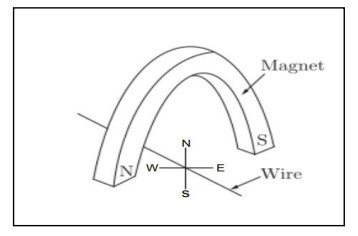
The current in the wire can be reversed. The pole of the magnet can also be changed
over. In how many of the four directions shown can the force act on the wire?
(a) 1
(b) 2
(c) 3
(d) 4
Solution

Question 15
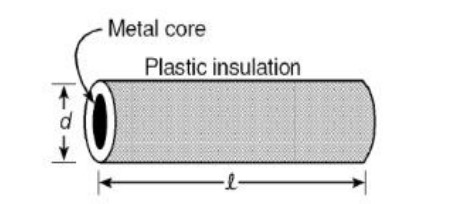
Plastic insulation surrounds a wire having diameter d and length l as shown above. A
decrease in the resistance of the wire would be produced by an increase in the
(a) length l of the wire
(b) diameter d of the wire
(c) temperature of the wire
(d) thickness of the plastic insulation
Solution

Question 16
Which of the following pattern correctly describes the magnetic field around a long
straight wire carrying current?
(a) straight lines perpendicular to the wire.
(b) straight lines parallel to the wire.
(c) radial lines originating from the wire.
(d) concentric circles centred around the wire
Solution

Q. no 17 to 20 are Assertion - Reasoning based questions.
These consist of two statements – Assertion (A) and Reason (R). Answer these questions selecting the
appropriate option given below:
(a) Both A and R are true and R is the correct explanation of A
(b) Both A and R are true and R is not the correct explanation of A
(c) A is true but R is false
(d) A is False but R is true
Question 18
Assertion: Height in pea plants is controlled by efficiency of enzymes and is thus
genetically controlled.
Reason: Cellular DNA is the information source for making proteins in the cell.
Solution

Question 19
Assertion: Amphibians can tolerate mixing of oxygenated and deoxygenated blood.
Reason: Amphibians are animals with two chambered heart
Solution

Question 20
Assertion: On freely suspending a current – carrying solenoid, it comes to rest in
Geographical N-S direction.
Reason : One end of current carrying straight solenoid behaves as a North pole and
the other end as a South pole, just like a bar magnet.
Solution

Section-B
Question 21
A clear solution of slaked lime is made by dissolving Ca(OH)2 in an excess of water.
This solution is left exposed to air. The solution slowly goes milky as a faint white
precipitate forms. Explain why a faint white precipitate forms, support your
response with the help of a chemical equation.
OR
Keerti added dilute Hydrochloric acid to four metals and recorded her observations
as shown in the table given below:
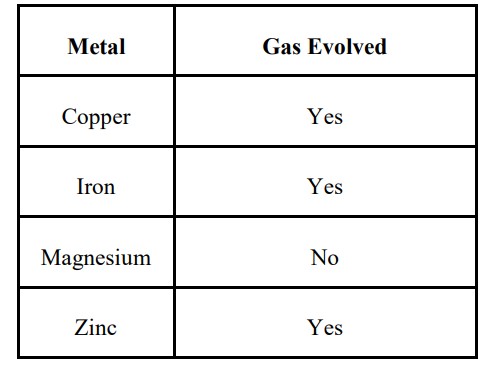
Select the correct observation(s) and give chemical equation(s) of the reaction
involved.
Solution

Question 22
How is the mode of action in beating of the heart different from reflex actions? Give four examples.
Solution


Question 23
Patients whose gallbladder are removed are recommended to eat less oily food. Why?
Solution

Question 24
Name the substances other than water, that are reabsorbed during urine formation. What are the two parameters that decide the amount of water that is reabsorbed in the kidney?
Solution

Question 25
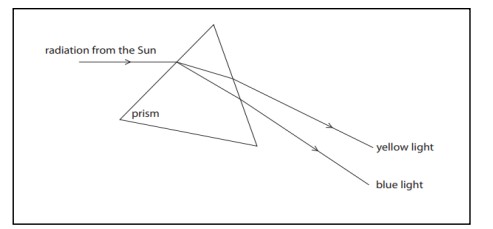
State the phenomena observed in the above diagram. Explain with reference to the
diagram, which of the two lights mentioned above will have the higher wavelength?
OR
How will you use two identical prisms so that a narrow beam of white lightincident
on one prism emerges out of the second prism as white light? Draw the diagram.
Solution

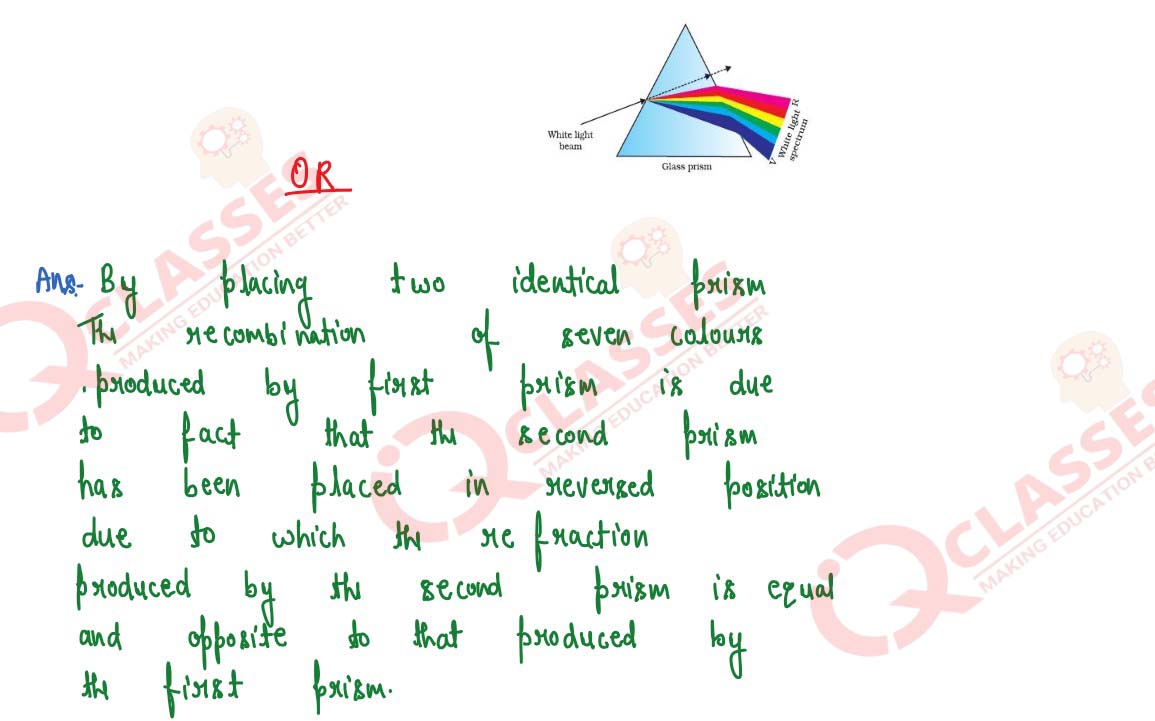

Question 26
A lot of waste is generated in neighborhood. However, almost all of it is biodegradable. What impact will it have on the environment or human health?
Solution

Section-C
Question 28

(a) Identify the gasses evolved at the anode and cathode in the above
experimental set up.
(b) Name the process that occurs. Why is it called so?
(c) Illustrate the reaction of the process with the help of a chemical equation
Solution

Question 29
The leaves of a plant were covered with aluminium foil, how would it affect the
physiology of the plant?
OR
How is lymph an important fluid involved in transportation? If lymphatic vessels
get blocked, how would it affect the human body? Elaborate
Solution

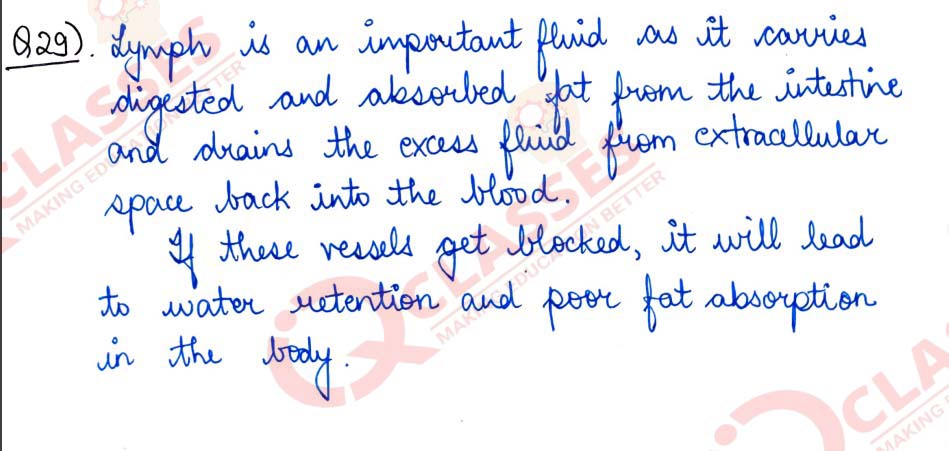
Question 30
Rohit wants to have an erect image of an object using a converging mirror of focal
length 40 cm.
(a) Specify the range of distance where the object can be placed in front of the
mirror. Justify.
(b) Draw a ray diagram to show image formation in this case.
(c) State one use of the mirror based on the above kind of image formation.
Solution

Question 31
(a) A lens of focal length 5 cm is being used by Debashree in the laboratory as a
magnifying glass. Her least distance of distinct vision is 25 cm.
(i) What is the magnification obtained by using the glass?
(ii) She keeps a book at a distance 10 cm from her eyes and tries to read. She is
unable to read. What is the reason for this?
(b) Ravi kept a book at a distance of 10 cm from the eyes of his friend Hari. Hari is
not able to read anything written in the book. Give reasons for this?
Solution

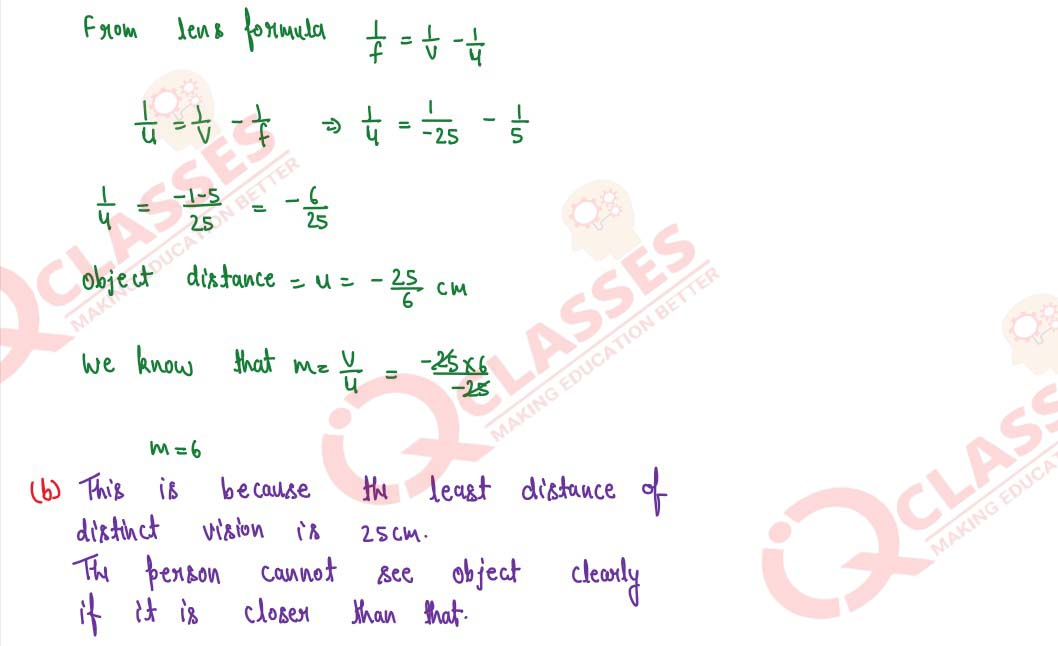
Question 32
A student fixes a white sheet of paper on a drawing board. He places a bar magnet
in the centre and sprinkles some iron filings uniformly around the bar magnet. Then
he taps gently and observes that iron filings arrange themselves in a certain pattern.
(a) Why do iron filings arrange themselves in a particular pattern?
(b) Which physical quantity is indicated by the pattern of field lines around the
bar magnet?
(c) State any two properties of magnetic field lines.
OR
A compass needle is placed near a current carrying wire. State your observations for
the following cases and give reasons for the same in each case-
(a) Magnitude of electric current in wire is increased.
(b) The compass needle is displaced away from the wire
Solution

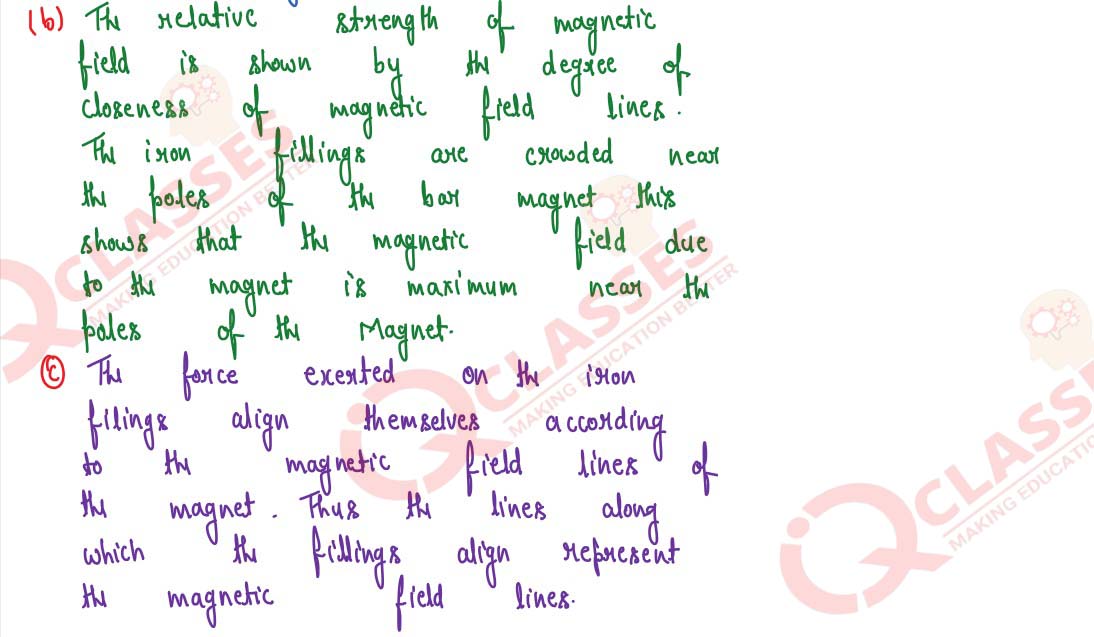
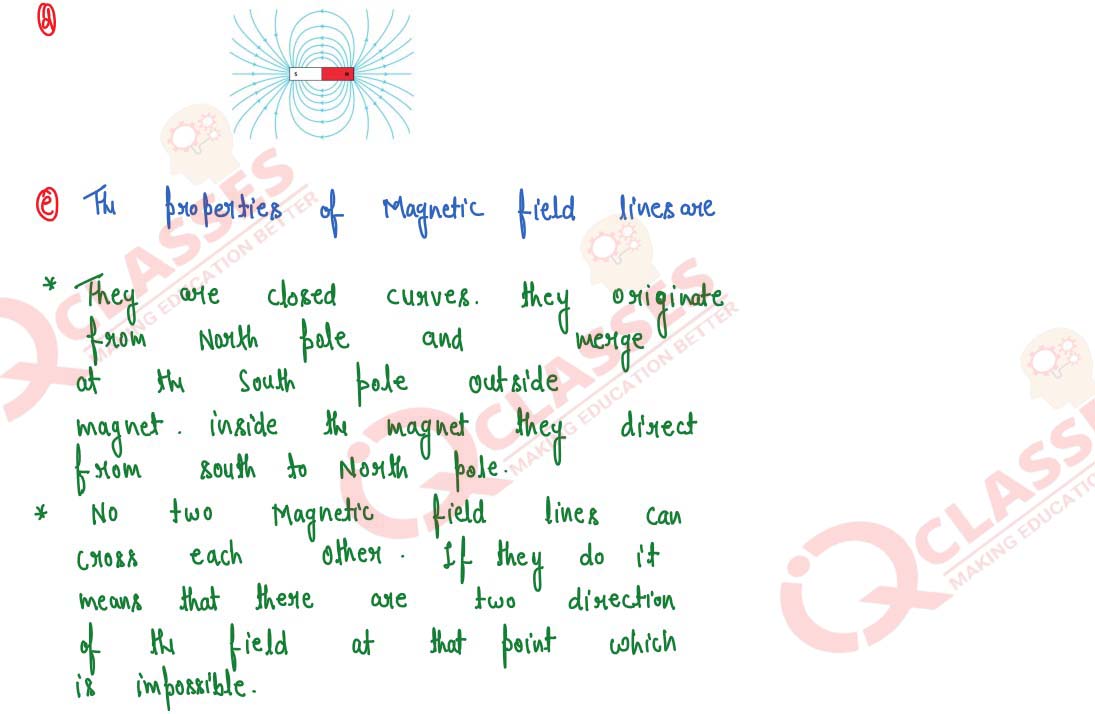
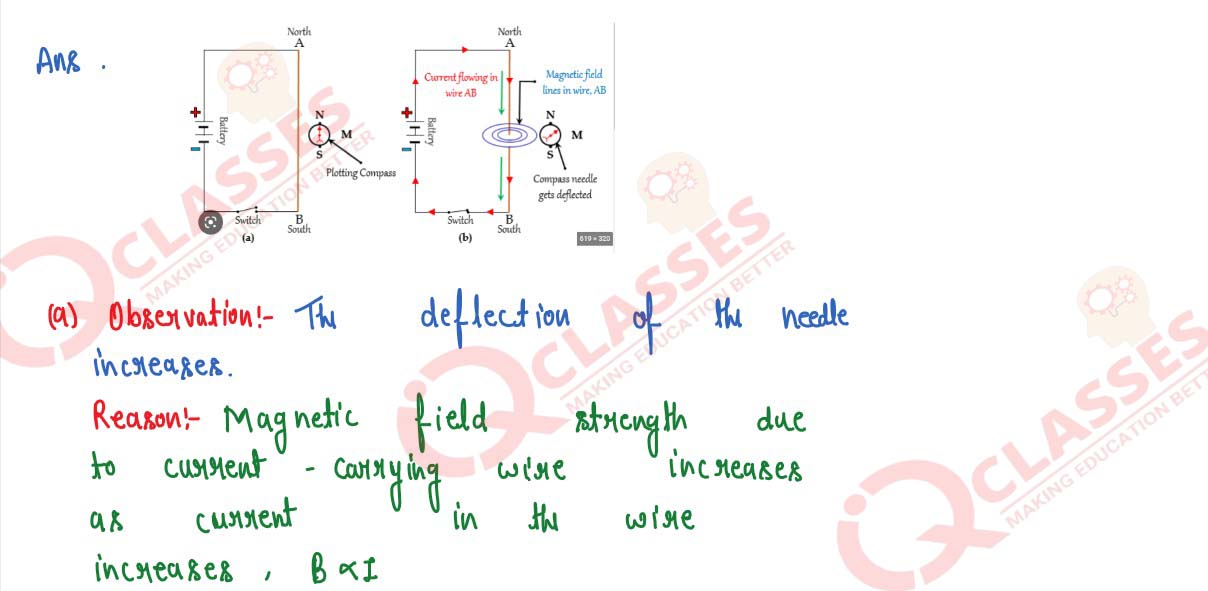
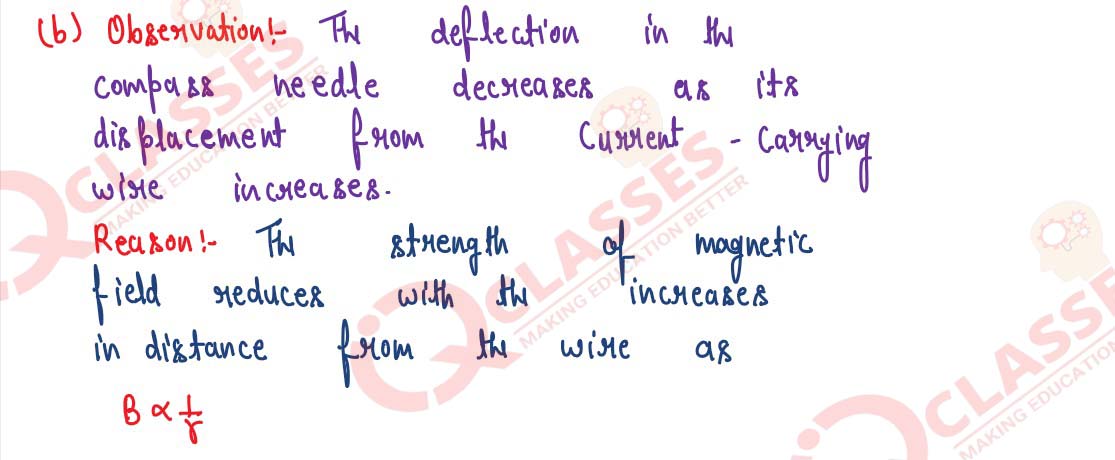
Question 33
Why is damage to the ozone layer a cause for concern? What are its causes and what steps are being taken to limit this damage?
Solution

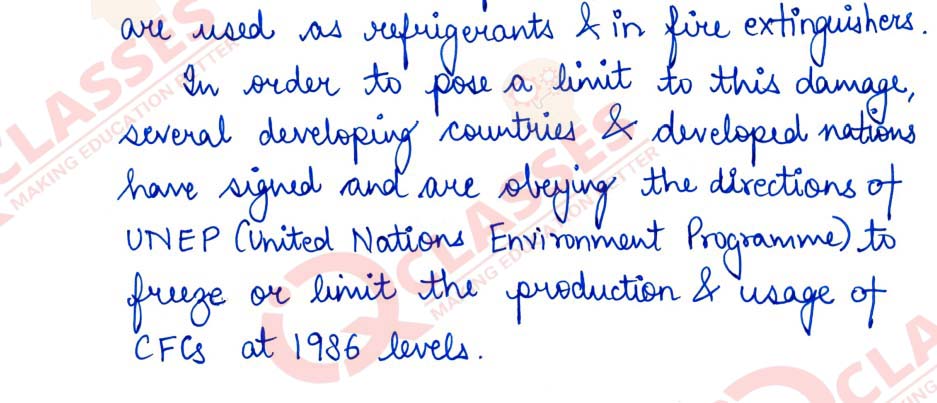
Section-D
Question 34
Shristi heated Ethanol with a compound A in presence of a few drops of
concentrated sulphuric acid and observed a sweet smelling compound B is formed.
When B is treated with sodium hydroxide it gives back Ethanol and a compound C.
(a) Identify A and C
(b) Give one use each of compounds A and B.
(c) Write the chemical reactions involved and name the reactions
OR
(a) What is the role of concentrated Sulphuric acid when it is heated with
Ethanol at 443 K. Give the reaction involved.
(b) Reshu by mistake forgot to label the two test tubes containing Ethanol and
Ethanoic acid. Suggest an experiment to identify the substances correctly?
Illustrate the reactions with the help of chemical equations
Solution

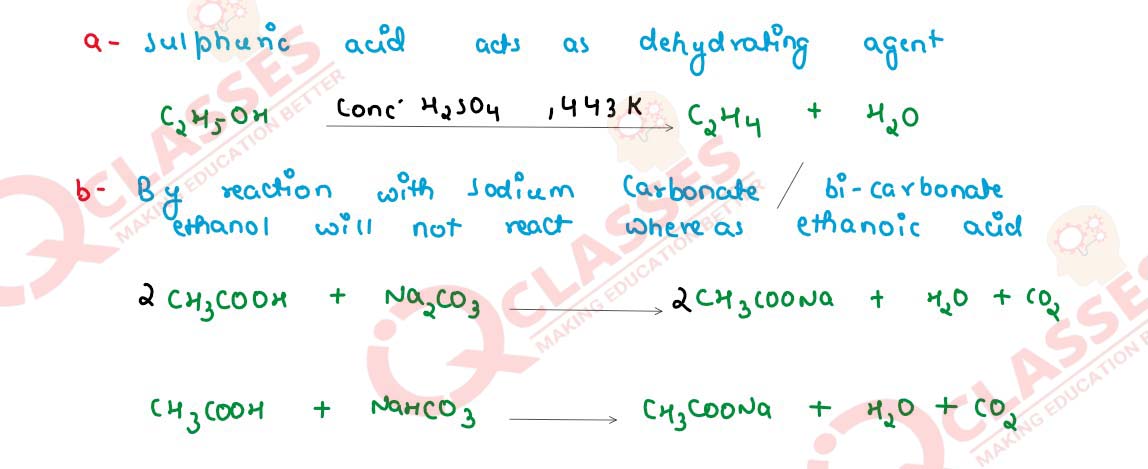
Question 35
(a) Why is it not possible to reconstruct the whole organism from a fragment in
complex multicellular organisms?
(b) Sexual maturation of reproductive tissues and organs are necessary link for
reproduction. Elucidate
OR
(a) How are variations useful for species if there is drastic alteration in the niches?
(b) Explain how the uterus and placenta provide necessary conditions for proper
growth and development of the embryo after implantation?
Solution

.jpg)
-1.jpg)
-2.jpg)
-3.jpg)
-4.jpg)
Section-E
Question 36
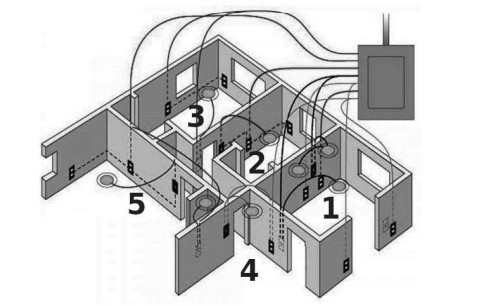
The diagram above is a schematic diagram of a household circuit. The house shown
in the above diagram has 5 usable spaces where electrical connections are made.
For this house, the mains have a voltage of 220 V and the net current coming from
the mains is 22A.
(a) What is the mode of connection to all the spaces in the house from the
mains?
(b) The spaces 5 and 4 have the same resistance and spaces 3 and 2 have
respective resistances of 20Ω and 30Ω. Space 1 has a resistance double that
of space 5. What is the net resistance for space 5.
(c) What is the current in space 3?
(d) What should be placed between the main connection and the rest of the
house’s electrical appliances to save them from accidental high electric
current?
Solution

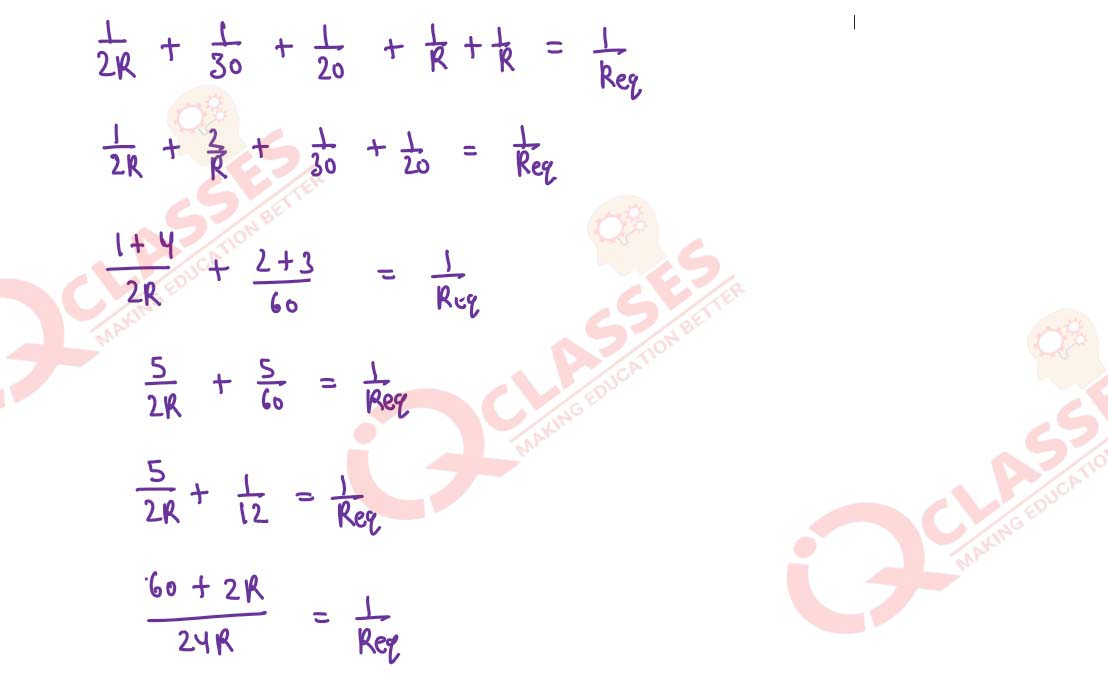

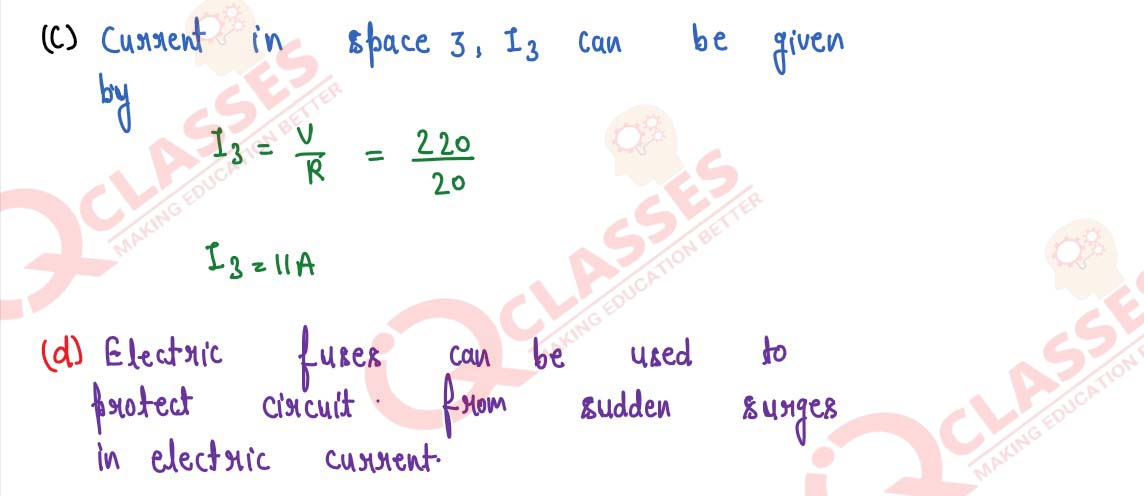
Question 37
Two students decided to investigate the effect of water and air on iron object under
identical experimental conditions. They measured the mass of each object before
placing it partially immersed in 10 ml of water. After a few days, the object were
removed, dried and their masses were measured. The table shows their results.

(a) What might be the reason for the varied observations of the two students?
(b) In another set up the students coated iron nails with zinc metal and noted that,
iron nails coated with zinc prevents rusting. They also observed that zinc
initially acts as a physical barrier, but an extra advantage of using zinc is that
it continues to prevent rusting even if the layer of zinc is damaged. Name this
process of rust prevention and give any two other methods to prevent rusting
OR
(b) In which of the following applications of Iron, rusting will occur most?
Support your answer with valid reason.

A - Iron Bucket electroplated with Zinc
B - Electricity cables having iron wires covered with aluminium
C - Iron hinges on a gate
D - Painted iron fence
Solution

Question 38
Pooja has green eyes while her parents and brother have black eyes. Pooja’s
husband Ravi has black eyes while his mother has green eyes and father has black
eyes.
(a) On the basis of the above given information, is the green eye colour a
dominant or recessive trait? Justify your answer.
(b) What is the possible genetic makeup of Pooja’s brother’s eye colour?
(c) What is the probability that the offspring of Pooja and Ravi will have green
eyes? Also, show the inheritance of eye colour in the offspring with the
help of a suitable cross
OR
(d) 50% of the offspring of Pooja’s brother are green eyed. With help of cross
show how this is possible.
Solution

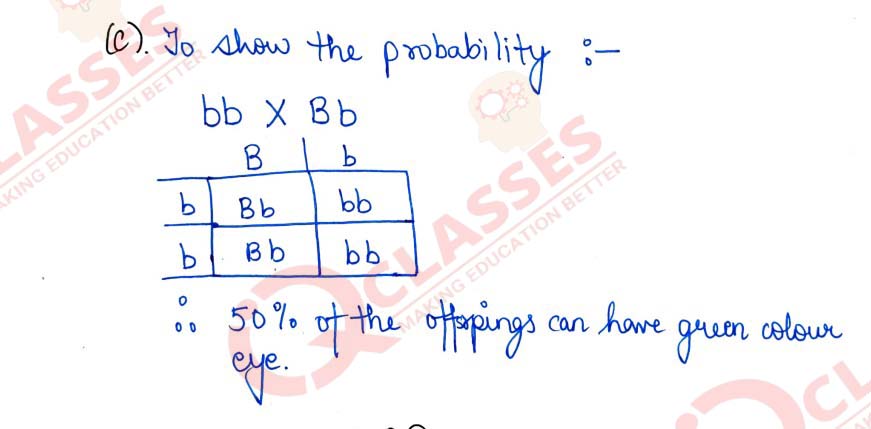
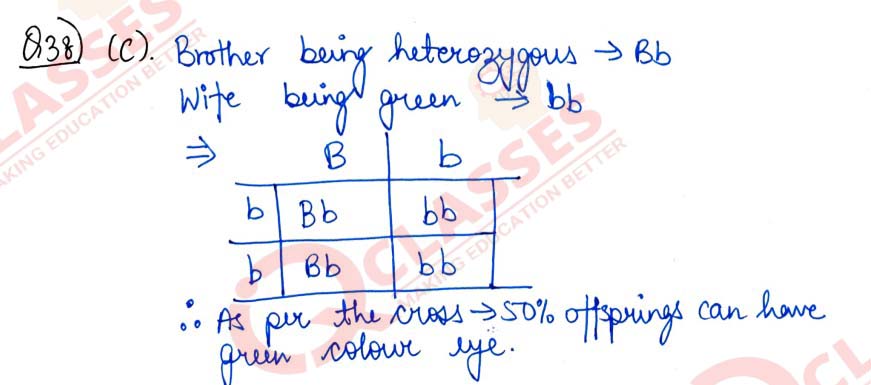
Question 39
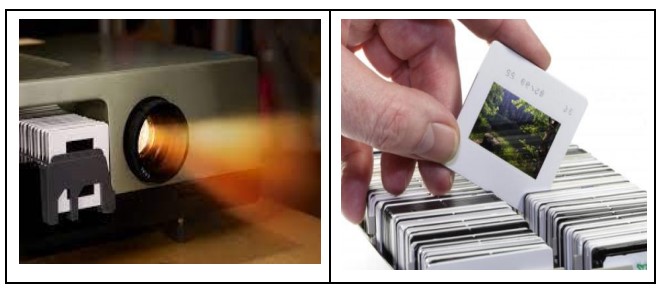
The above images are that of a specialized slide projector. Slides are small
transparencies mounted in sturdy frames ideally suited to magnification and
projection, since they have a very high resolution and a high image quality. There is
a tray where the slides are to be put into a particular orientation so that the viewers
can see the enlarged erect images of the transparent slides. This means that the
slides will have to be inserted upside down in the projector tray.
To show her students the images of insects that she investigated in the lab, Mrs. Iyer
brought a slide projector. Her slide projector produced a 500 times enlarged and
inverted image of a slide on a screen 10 m away
(a) Based on the text and data given in the above paragraph, what kind of lens
must the slide projector have?
(b) If v is the symbol used for image distance and u for object distance then
with one reason state what will be the sign for 𝑣/𝑢
in the given case?
(c) A slide projector has a convex lens with a focal length of 20 cm. The slide
is placed upside down 21 cm from the lens. How far away should the screen
be placed from the slide projector’s lens so that the slide is in focus?
OR
(c)When a slide is placed 15 cm behind the lens in the projector, an image is
formed 3 m in front of the lens. If the focal length of the lens is 14 cm, draw
a ray diagram to show image formation. (not to scale)
Solution

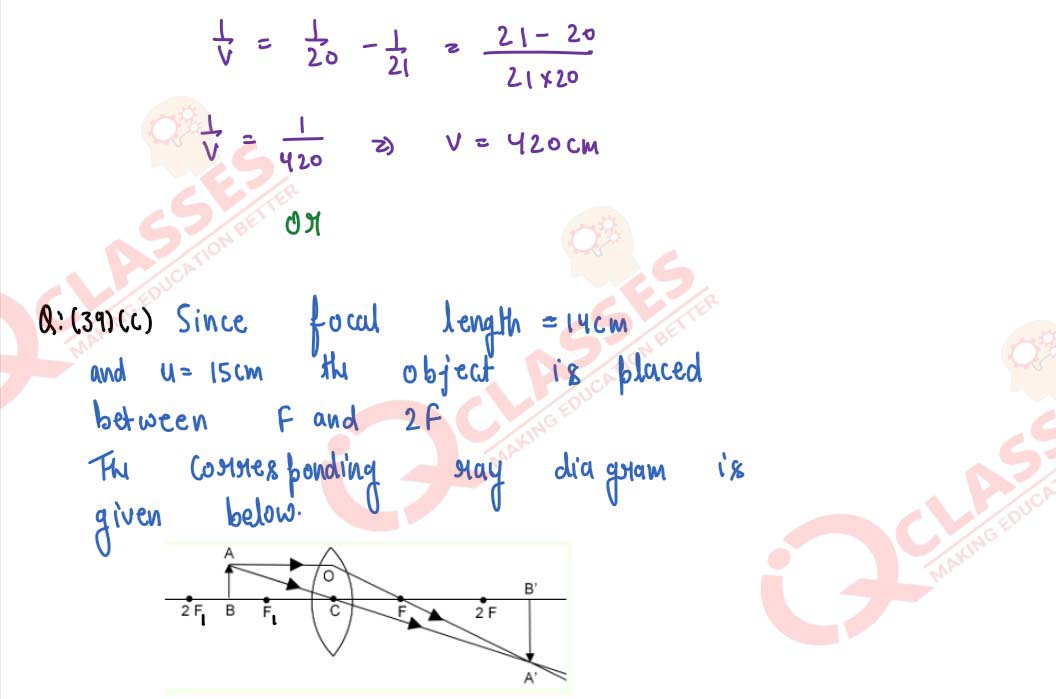

Add a comment